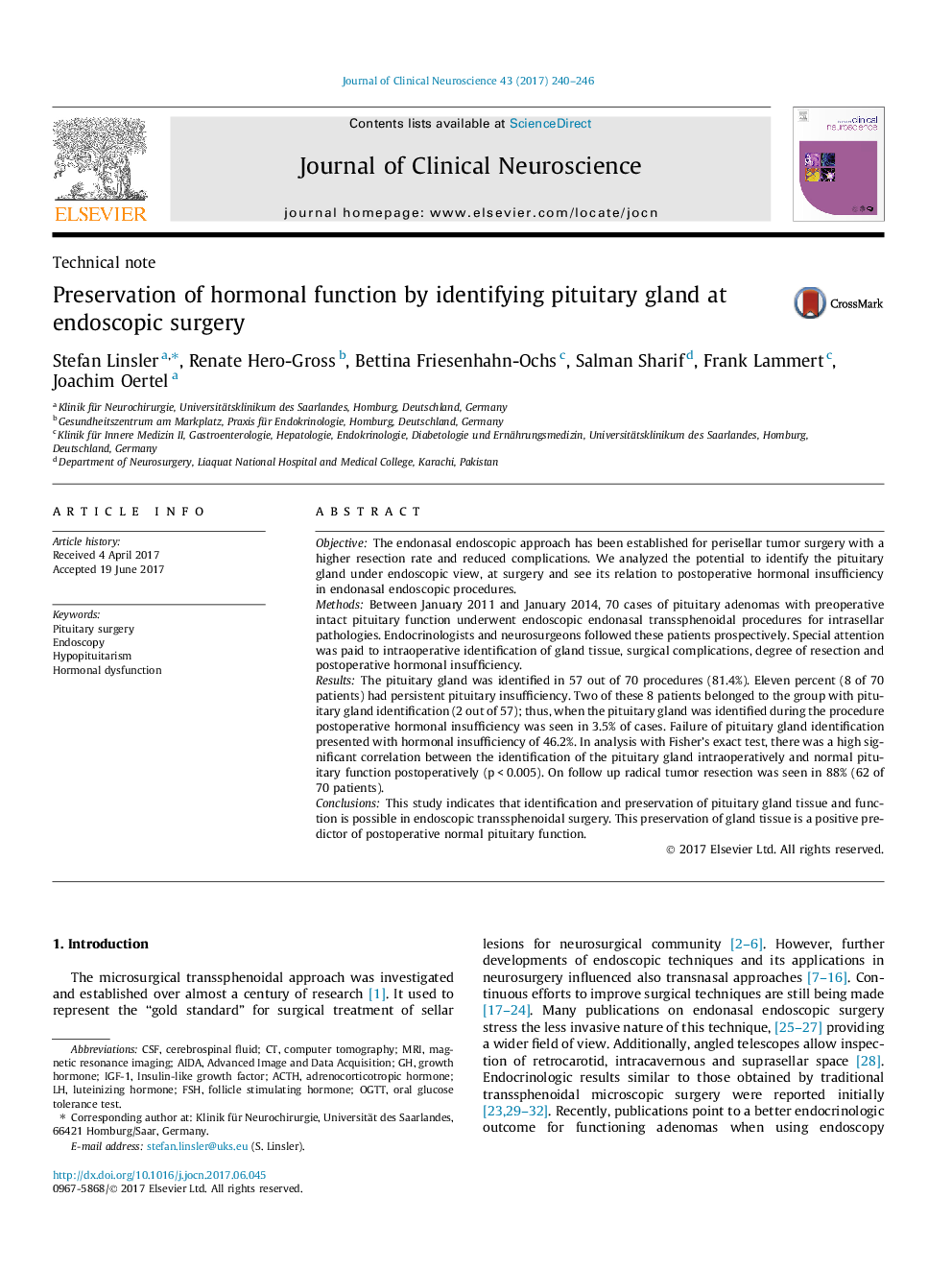| Article ID | Journal | Published Year | Pages | File Type |
|---|---|---|---|---|
| 5629670 | Journal of Clinical Neuroscience | 2017 | 7 Pages |
â¢This is the first analysis correlating gland tissue identification and preservation of hormonal function.â¢Gland tissue identification was possible in 81% of cases.â¢Preservation of gland tissue is a positive predictor of postoperative normal pituitary function.â¢Endoscopic technique for pituitary surgery is effective to prevent permanent postoperative hormonal dysfunctions.
ObjectiveThe endonasal endoscopic approach has been established for perisellar tumor surgery with a higher resection rate and reduced complications. We analyzed the potential to identify the pituitary gland under endoscopic view, at surgery and see its relation to postoperative hormonal insufficiency in endonasal endoscopic procedures.MethodsBetween January 2011 and January 2014, 70 cases of pituitary adenomas with preoperative intact pituitary function underwent endoscopic endonasal transsphenoidal procedures for intrasellar pathologies. Endocrinologists and neurosurgeons followed these patients prospectively. Special attention was paid to intraoperative identification of gland tissue, surgical complications, degree of resection and postoperative hormonal insufficiency.ResultsThe pituitary gland was identified in 57 out of 70 procedures (81.4%). Eleven percent (8 of 70 patients) had persistent pituitary insufficiency. Two of these 8 patients belonged to the group with pituitary gland identification (2 out of 57); thus, when the pituitary gland was identified during the procedure postoperative hormonal insufficiency was seen in 3.5% of cases. Failure of pituitary gland identification presented with hormonal insufficiency of 46.2%. In analysis with Fisher's exact test, there was a high significant correlation between the identification of the pituitary gland intraoperatively and normal pituitary function postoperatively (p < 0.005). On follow up radical tumor resection was seen in 88% (62 of 70 patients).ConclusionsThis study indicates that identification and preservation of pituitary gland tissue and function is possible in endoscopic transsphenoidal surgery. This preservation of gland tissue is a positive predictor of postoperative normal pituitary function.
